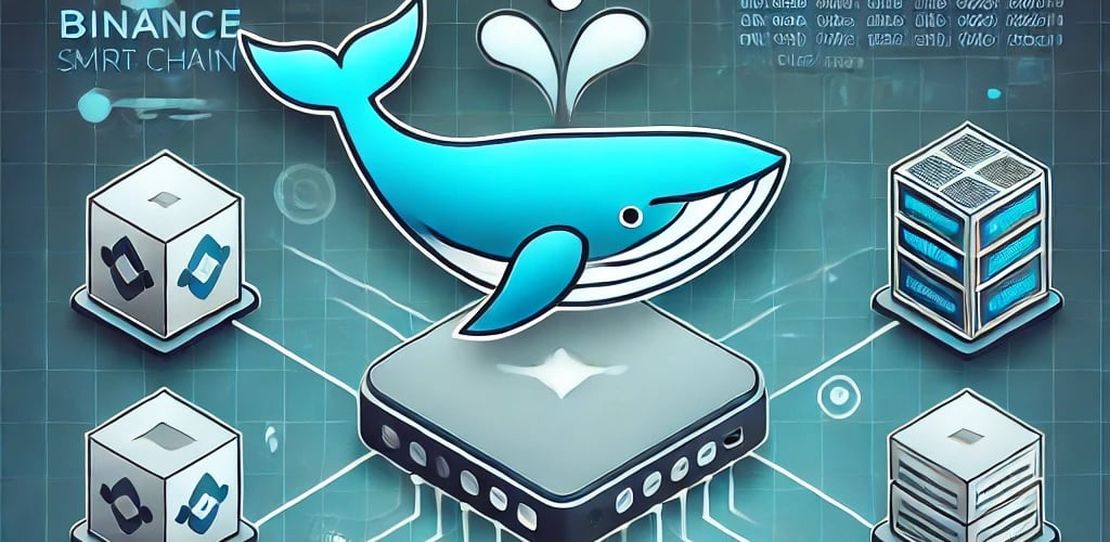
Setting Up a Binance Smart Chain (BSC) Node for LegitDAO Using Docker
- Pascal Germain
- Dao , Dev ops
- October 29, 2024
Table of Contents
In this guide, we’ll show you how to configure and run a Binance Smart Chain (BSC) node using Docker and Docker Compose. This setup is specifically tailored for the LegitDAO project to ensure efficient blockchain interaction with persistence, automatic restarts, and WebSocket support.
For more general information on how to contribute and clone LegitDAO, refer to our Contributing to LegitDAO Guide. This post focuses on the specific task of adding the Binance Smart Chain Node to the LegitDAO project using Docker.
Project Structure
Here’s a look at the project folder structure for the BSC node setup:
projects/infrastructure/blockchains/bsc/
├── bscdata/ # Directory to store blockchain data (persisted outside the container)
├── config/
│ └── config.toml # BSC node configuration file
├── Dockerfile # Dockerfile to build the BSC node
├── docker-compose.yml # Docker Compose configuration
└── README.md # Project documentation (this file)
Configuration Breakdown
Dockerfile
The Dockerfile is the script that builds the Docker image for the BSC node. Here’s an overview of its functionality:
# Use an official Go Ethereum base image (latest version)
FROM ethereum/client-go:stable
# Create a directory for blockchain data and set permissions
RUN mkdir -p /bscdata && chown -R 1000:1000 /bscdata
# Set working directory to /bsc
WORKDIR /bsc
# Copy configuration file to the container
COPY config/config.toml /bsc/config.toml
# Expose the required ports for the BSC node
EXPOSE 8545 # HTTP RPC port
EXPOSE 30303 # P2P port for peer discovery
EXPOSE 8546 # WebSocket port
# Start the BSC node with the updated configuration
ENTRYPOINT ["geth", "--config", "/bsc/config.toml", "--datadir", "/bscdata", "--http", "--http.addr", "0.0.0.0", "--http.port", "8545", "--http.api", "eth,net,web3", "--ws", "--ws.addr", "0.0.0.0", "--ws.port", "8546", "--ws.api", "eth,net,web3", "--syncmode", "snap"]
Explanation:
- Base Image: It uses the official Go Ethereum client (
ethereum/client-go:stable) to run the BSC node. - Blockchain Data Persistence: The
/bscdatafolder inside the container stores blockchain data. - Ports Exposed: Ports for HTTP RPC, P2P, and WebSocket are exposed to interact with the node.
- Node Start Command: It starts the BSC node with the necessary configuration, exposing HTTP and WebSocket endpoints for client connections.
Docker Compose Configuration
The docker-compose.yml defines the BSC node as a service. It maps ports, persists data, and ensures the container restarts automatically if it stops.
version: '3.8'
services:
bsc-node:
build: .
container_name: bsc-node
ports:
- "8545:8545" # HTTP RPC port
- "30303:30303" # P2P port
- "8546:8546" # WebSocket port
volumes:
- ./bscdata:/bscdata # External volume to persist blockchain data
- ./config:/bsc # Config folder with config.toml
restart: always # Automatically restart the container if it stops
Key Points:
- Volumes:
./bscdata:/bscdata: Stores blockchain data outside the container for persistence../config:/bsc: Maps the localconfig.tomlfile into the container so configuration changes are reflected.
- Restart Policy: The
restart: alwaysensures the node is automatically restarted in case of a failure.
Setup and Usage
Step 1: Clone the Repository
If you haven’t already, clone the repository where this setup is hosted:
git clone https://your-repository-url/bsc-node.git
cd bsc-node
Step 2: Update config.toml (Optional)
You can modify the config.toml file located in the config/ directory to suit your needs. By default, the setup syncs with the Binance Smart Chain Mainnet and uses the snap sync mode for faster synchronization.
Example config.toml:
[Eth]
NetworkId = 56 # BSC Mainnet
SyncMode = "snap" # Use "snap" sync mode for faster synchronization
Step 3: Build and Run the BSC Node
Use Docker Compose to build and start the BSC node. This command will create the image and start the container:
docker-compose up --build
Docker Compose will:
- Build the Docker image.
- Start the BSC node.
- Persist blockchain data in the
bscdata/folder.
Step 4: Monitor Sync Progress
You can monitor the sync progress by checking the logs. Run the following command to view the logs:
docker logs -f bsc-node
The logs will show the node searching for peers and syncing with the Binance Smart Chain.
Step 5: Interact with the Node
Once the node is running, you can interact with it using the following commands:
Get the Current Block Number:
curl -X POST -H "Content-Type: application/json" --data "{\"jsonrpc\":\"2.0\",\"method\":\"eth_blockNumber\",\"params\":[],\"id\":1}" http://localhost:8545Connect via WebSocket:
ws://localhost:8546
Step 6: Stop the Node
To stop the node, press Ctrl + C in the terminal or use:
docker-compose down
Troubleshooting
No Peers Found
If the node cannot find peers, ensure that port 30303 is open and accessible. Also, ensure that Docker Desktop has enough resources allocated (e.g., CPU, memory).
Slow Syncing
If the node syncs slowly, you can increase the cache size in the config.toml file:
[Eth]
NetworkId = 56
SyncMode = "snap"
Cache = 4096 # Increase the cache size for faster synchronization
Additional Resources
This setup provides an easy way to run a Binance Smart Chain node using Docker. Follow the steps, and you’ll have a fully functional node up and running with persistent blockchain data. If you need help, feel free to ask questions or refer to the resources linked above.


